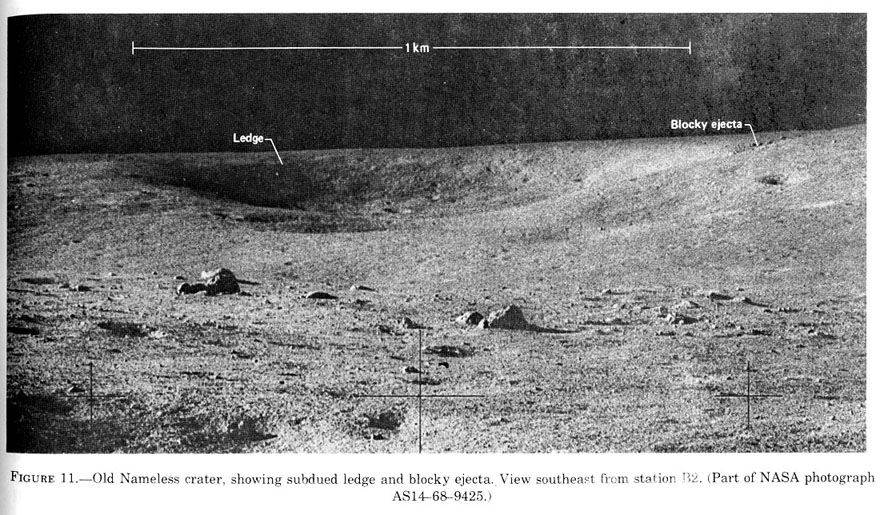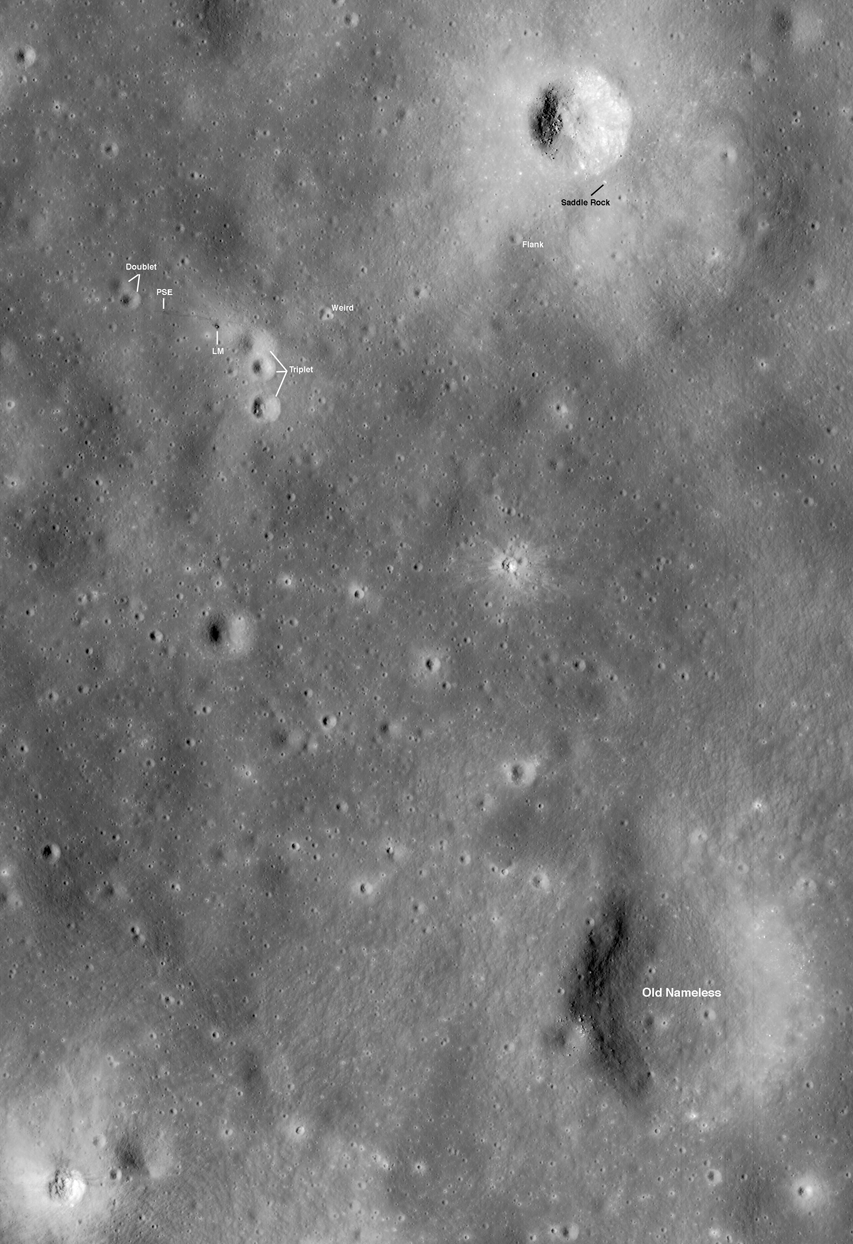Naming Old Nameless
During planning and training for Apollo 15, 16 and 17, craters
and
other features were named by the crews and EVA CapComs.
Apollo 15 Commander Dave Scott recalled during the mission
review for
ALSJ that he, Jim Irwin, and EVA CapCom Joe Allen did most of
the
naming "We did most of it at the Cape during our post-dinner
geology
sessions".† See the full discussion at
122:04:08.†
See,
also, a related discussion at
146:49:02
in the A15LSJ in which geologist Jerry Schaber notes that he
coined the
name for Apollo 15's North Complex
Traverse maps on pages
35 and
36 in the Apollo 13 Press Kit
indicate
that crater names used during Apollo 14 - Cone, Flank, Weird,
Triplet,
and Doublet - plus a few others - Star, Neighbor, and Crossroads
- were
named prior to Apollo 13.† This suggests that Old Nameless
was
also named prior to Apollo 13, perhaps by the crew.
Commander Jim Lovell had already named at least one lunar
feature,
Mount Marilyn, when he flew on Apollo 8.† He got further
encouragement from geologist Farouk El Baz.† Lovell, along
with
LMP Fred Haise and their back-ups, John Young and Charlie Duke,
were
already learning to be field geologists under the tutelage of
geologist
Lee Silver.† As Apollo historian Andrew Chaikin recounts in
A Man
on the Moon", El Baz arranged a meeting with the crew in an
effort to
convince them that they - and particuarly CMP Ken Mattingly -
could do
useful geologic observations during their time in lunar orbit.
†
In preparation for the meeting, El Baz convered the walls of the
room
with maps showing the ground they would see from orbit.
"Anyone can look", he told them,
"but
few really see.† We don't know very much about the
moon.† You
have a chance to help us know more."† Then he took the
men on a
tour of the moon, reciting from his mental data bank of
landmarks and
lunar mysteries, describing the lay of the land and sneaking
in a good
bit of geology along the way.† He could tell Lovell and
Mattingly
were still apprehensive, but Haise was smiling with
enthusiasm.†
Then they asked† questions, and they listened to the
answers.† They began to make up nicknames for
funny-looking
craters they would use for landmarks.† The meeting was
supposed to
go two hours; it went five. When it ended, Lovel agreed to
schedule
repeats.† In time, El Baz was meeting with Mattingly
regularly,
preparing him for a solo mission of scientific observation.



